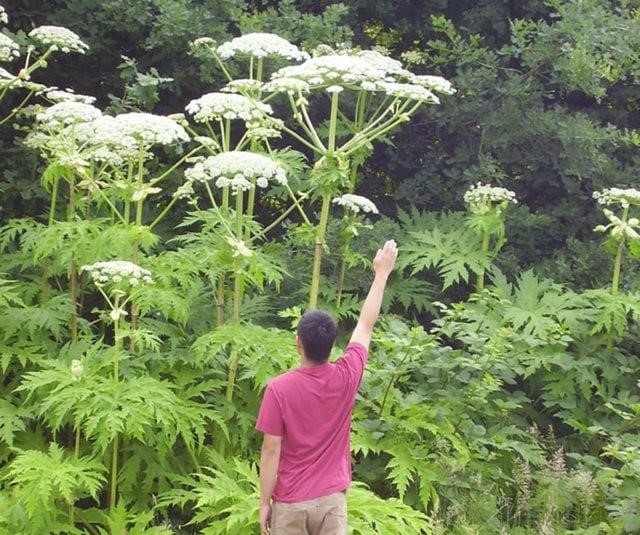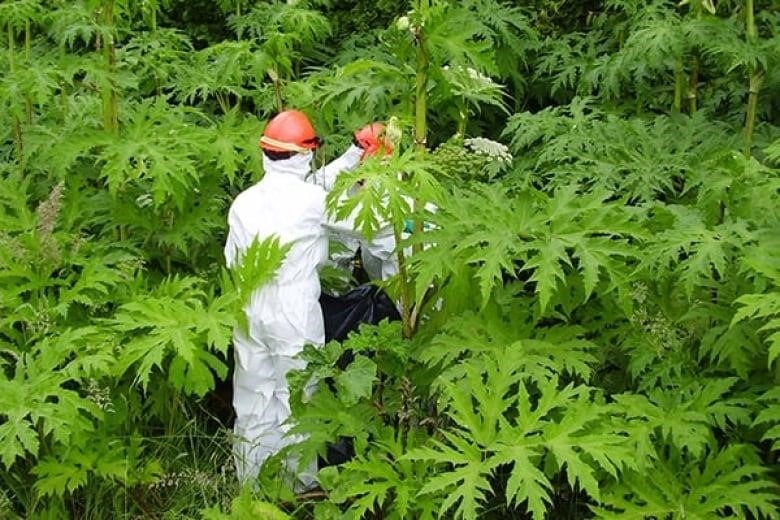
Giant hogweed is a noxious, invasive weed that grows mostly on the South Coast and Vancouver Island in British Columbia
With spring just around the corner, a man from B.C. is warning others about giant hogweed, a highly toxic plant that caused him to temporarily lose his vision and get huge, burning blisters all over his body.
Giant hogweed is an invasive, poisonous weed that grows mostly on the South Coast and Vancouver Island in British Columbia. It has been seen in Atlantic Canada, Quebec, and Ontario, and Nature Conservancy Canada says it seems to be spreading.
“This plant is awful. It’s about as bad as things can get. “Don Pollack, who met Hogweed in May 2021, said the same thing.
Pollack, 49, says he was biking through the Burnaby greenbelt area when he came across a “plume of pollen” from a weed that had grown too much and was hanging over the trail.
“By the time I got to southwest Marine Drive, I couldn’t see anything because of the snow. I wasn’t able to see, “he said. “It was white light that cut through.”

Giant hogweed grows three to four meters tall and thrives near streams, creeks, and ditches. When in bloom, it has a lot of small, white flowers that look like an umbrella.
The Invasive Species Council of British Columbia says that it is an unwanted invader because it is big, makes a lot of seeds, and grows quickly.
The leaves and stems have a highly toxic sap that can make people more sensitive to sunlight, which can cause burns, blisters, scarring, and, in the worst cases, temporary loss of vision.
Pollack said that he sat on a curb for 45 to 60 minutes, worrying, until his vision slowly got better enough for him to walk his bike the four kilometers home.
“By the end of the day, I could see blisters forming on the sides of my stomach,” he said, adding that the blisters quickly spread to his head, neck, and ankles.
“One had burst, and I knew it right away because it soaked my sock.” “That’s how big the blisters were,” he said.
It took 4 months for the symptoms to stop
Pollack says he went to a few medical clinics and saw an allergist. He was given antibiotics and antihistamines, but the doctors he saw couldn’t figure out what was wrong with him. It took more than four months for his symptoms to go away completely.
Last January, he found the answer by accident when he saw a YouTube video of workers pulling hogweed from a field.
“What I had gone through on my bike was being taken away. They were cleaning up these trees while wearing hazmat suits and driving safety vehicles. And I’m thinking, “I just went right through that.””

Gail Wallin, the executive director of the Invasive Species Council of B.C., says that her office gets more calls in the spring from people who have come in contact with the plant and aren’t sure what caused blisters or other rare symptoms like temporary vision loss.
Wallin said, “You might not know it right away, because most people don’t make the connection.” “You may have had sap on you two days ago, and when you go outside, your skin starts to burn all at once.”
She says that gardeners and landscapers are partly to blame for the spread of the weed because it can be used as an ornament.
“It’s a big deal because it’s so big. But where it grows, it takes over the whole area and leaves no room for anything else to grow,” “Wallin said.
The council asks gardeners not to buy, sell, or grow giant hogweed or its seeds and to be very careful when pulling it out of the ground.
Wallin said, “Either hire a pro or carefully follow the instructions on our website.”
The Invasive Species Council says this is how to get rid of hogweed:
- Wear the right head-to-toe safety gear.
- Plants, plant parts, and seeds were removed by hand and put in a bag or tarp before being taken to a designated place to be thrown away, like a landfill or transfer station.
- Before leaving an infested area, you should wash your equipment and vehicles, including the tires and undercarriage, at designated cleaning sites.
“Make sure it doesn’t end up in a compost bin.” “You want to make sure it goes into the landfill or whatever your local government uses,” Wallin said.
Wallin suggests that people who grow hogweed in their gardens at least remove the seeds after they form in June and July. This will reduce the chance that more plants will grow on the property and elsewhere.
People are also asked to report the invasive species online if they see it in their community.
